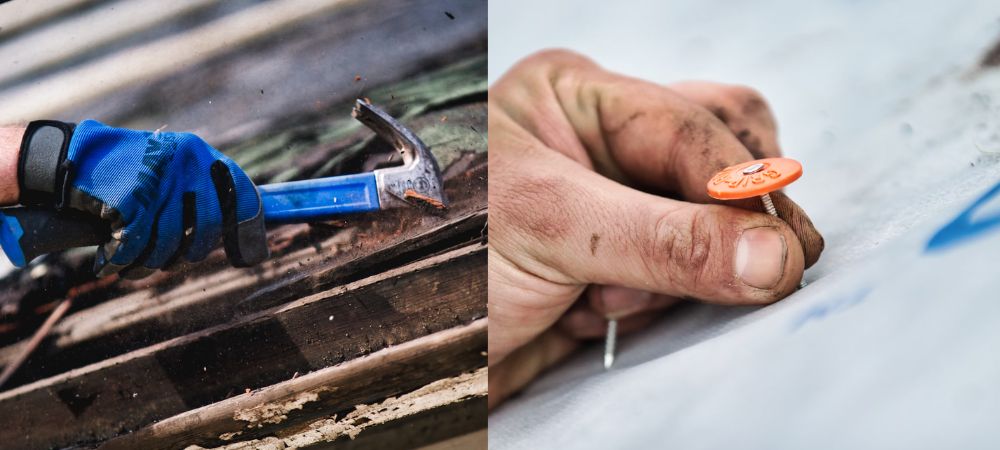A leaking or damaged roof requires prompt attention to prevent further issues. However, homeowners often face a critical decision—should they opt for repairs, or is a full roof replacement necessary? Several factors influence this choice, including the roof’s age, maintenance history, and the severity of the damage. Understanding these factors can help determine the best course of action.
When Repairs Are a Viable Option
Age and Condition Matter
The National Association of Home Builders (NAHB) has found that asphalt shingle roofs last about 20 years, but it depends on maintenance and environmental conditions. If a roof is under 15 years old and has been well-maintained—regular inspections, debris removal, and timely minor repairs—it is often a good candidate for repair. Addressing specific problem areas instead of replacing the entire roof can be more cost-effective and extend its lifespan.
However, repairs do not prevent future issues from developing in other areas. While fixing minor damage can be beneficial, it’s important to monitor the roof’s overall condition to ensure repairs remain a viable long-term solution.
Minor and Localized Damage
Damage limited to a small area, such as a few missing shingles or a minor leak, is usually repairable. A roofing contractor can replace damaged shingles, seal leaks, and reinforce weak spots without replacing the entire structure.
On the other hand, extensive or structural damage, such as multiple leaks or sagging sections, often indicates the need for a full replacement. Addressing isolated issues quickly can prevent them from escalating into more costly repairs.
When a Roof Replacement Is Necessary
Severe or Widespread Damage
If a roof has suffered extensive damage—such as from a severe storm, falling debris, or years of neglect—a full replacement may be the most practical solution. When multiple areas of the roof require attention or when the decking and structural elements are compromised, repairs may only provide a temporary fix.
Insurance companies often factor in the extent of the damage when determining coverage. If a large portion of the roof is affected, replacement is typically recommended to restore structural integrity and long-term durability.
Long-Term Leaks and Structural Issues
Even a small leak inside the home suggests significant underlying damage. If left unaddressed, water intrusion can lead to mold growth, insulation deterioration, and wood rot, all of which can weaken the roof’s framework. Persistent leaks indicate a failure in the roof’s protective barrier, often requiring a complete replacement to prevent further interior damage.
Enhancing Curb Appeal and Energy Efficiency
Even if a roof is still functional, replacement may be a better choice if the goal is to improve a home’s appearance and energy efficiency. An aging, worn roof can make a home look outdated, while a new roof enhances its aesthetic appeal and increases property value.
Modern roofing materials are designed to improve energy efficiency by reflecting heat and reducing indoor temperatures. Upgrading to an energy-efficient roof can lower utility costs and reduce the strain on heating and cooling systems, making replacement a worthwhile investment.
Making the Right Choice
Deciding between roof repair and replacement depends on multiple factors, including age, maintenance history, damage severity, and long-term goals. A roofing contractor can assess the roof’s condition and provide expert guidance on the best solution. Whether opting for repairs or a full replacement, addressing roofing issues promptly ensures a safer and more durable home.
FAQs
How do I know if my roof needs repairs or a full replacement?
A roofing contractor will assess factors like the roof’s age, extent of damage, and maintenance history. If the damage is minor and localized, repairs may be enough. However, widespread issues or an aging roof often require a full replacement.
Can I repair my roof instead of replacing it to save money?
Repairs are often a cost-effective solution, especially for younger roofs that are in good condition. However, if the roof is nearing the end of its lifespan or has significant damage, a replacement may be more economical in the long run.
What are the signs that my roof needs to be replaced?
Frequent leaks, missing or curling shingles, sagging areas, and excessive granule loss are signs that a replacement is needed. If you notice any of these, it’s best to consult a roofing contractor for an inspection.
How long does a roof repair or replacement take?
Roof repairs can often be completed in a day or two, depending on the extent of the damage. A full roof replacement usually takes a few days to a week, depending on the size of the roof and weather conditions.
Will my homeowner’s insurance cover roof repairs or replacement?
It depends on the cause of the damage. If the damage is due to a covered event like a storm, your insurance may cover some or all of the costs. However, normal wear and tear or lack of maintenance is usually not covered. A roofing contractor can help assess your situation and guide you through the claims process.

